

What is a Supernova?
Well, other than an amazing varietal of Mourvèdre here at Deep Sky Vineyard, the short answer…a supernova is the biggest explosion that humans have ever seen. Each blast is the extremely bright, super-powerful explosion of a star.
What causes a supernova?
One type of supernova is caused by the “last hurrah” of a dying massive star. This happens when a star at least five times the mass of our sun goes out with a fantastic bang!
Massive stars burn huge amounts of nuclear fuel at their cores, or centers. This produces tons of energy, so the center gets very hot. Heat generates pressure, and the pressure created by a star’s nuclear burning also keeps that star from collapsing.
A star is in balance between two opposite forces. The star’s gravity tries to squeeze the star into the smallest, tightest ball possible. But the nuclear fuel burning in the star’s core creates strong outward pressure. This outward push resists the inward squeeze of gravity.
When a massive star runs out of fuel, it cools off. This causes the pressure to drop. Gravity wins out, and the star suddenly collapses. Imagine something one million times the mass of Earth collapsing in 15 seconds! The collapse happens so quickly that it creates enormous shock waves that cause the outer part of the star to explode!
Usually a very dense core is left behind, along with an expanding cloud of hot gas called a nebula. A supernova of a star more than about 10 times the size of our sun may leave behind the densest objects in the universe—black holes.
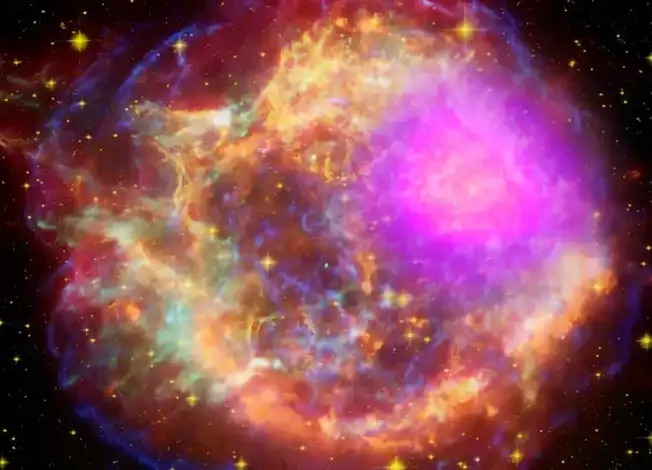
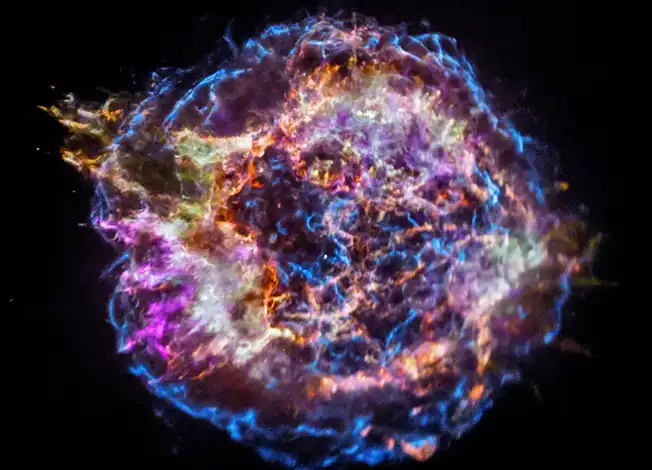
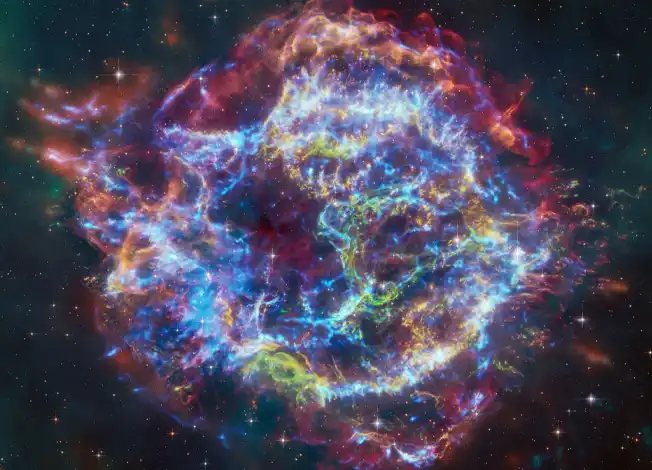

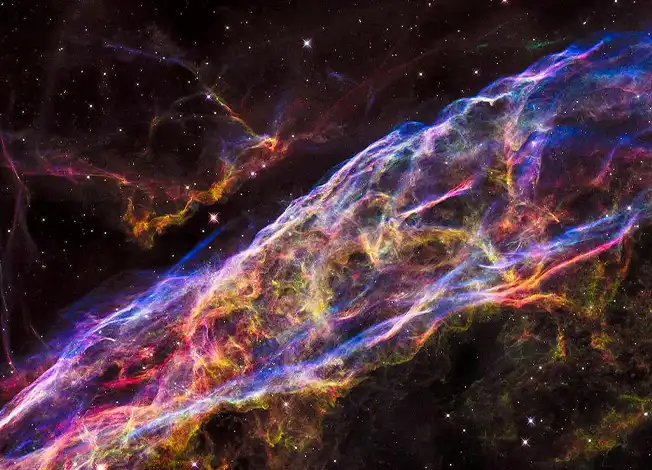
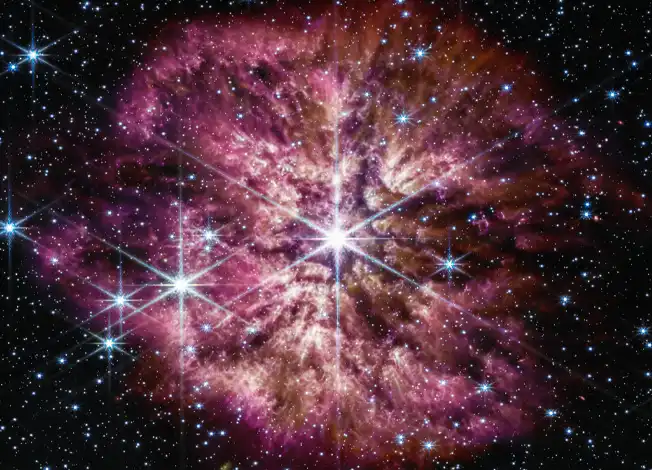
Supernova remnant images courtesy NASA/JPL-Caltech.
A second type of supernova can happen in systems where two stars orbit one another and at least one of those stars is an Earth-sized white dwarf. A white dwarf is what’s left after a star the size of our sun has run out of fuel. If one white dwarf collides with another or pulls too much matter from its nearby star, the white dwarf can explode. Kaboom!
How bright are supernovas?
These spectacular events can be so bright that they outshine their entire galaxies for a few days or even months. They can be seen across the universe.
How common are supernovas?
Not very. Astronomers believe that about two or three supernovas occur each century in galaxies like our own Milky Way. Because the universe contains so many galaxies, astronomers observe a few hundred supernovas per year outside our galaxy. Space dust blocks our view of most of the supernovas within the Milky Way.
What can we learn from supernovas?
Scientists have learned a lot about the universe by studying supernovas. They use the second type of supernova (the kind involving white dwarfs) like a ruler, to measure distances in space.
They have also learned that stars are the universe’s factories. Stars generate the chemical elements needed to make everything in our universe. At their cores, stars convert simple elements like hydrogen into heavier elements. These heavier elements, such as carbon and nitrogen, are the elements needed for life.
Only massive stars can make heavy elements like gold, silver, and uranium. When explosive supernovas happen, stars distribute both stored-up and newly-created elements throughout space.
How do scientists study supernovas?
NASA scientists use a number of different types of telescopes to search for and then study supernovas. One example is the NuSTAR (Nuclear Spectroscopic Telescope Array) mission, which uses X-ray vision to investigate the universe. NuSTAR is helping scientists observe supernovas and young nebulas to learn more about what happens leading up to, during, and after these spectacular blasts.
References:
What Is a Supernova? | NASA Space Place – NASA Science for Kids. (2021). https://spaceplace.nasa.gov/supernova/en/
VideoFromSpace. (2022, January 6). Watch a red supergiant star go supernova in this stunning animation [Video]. YouTube. https://www.youtube.com/watch?v=vtb1YPSbUfU

